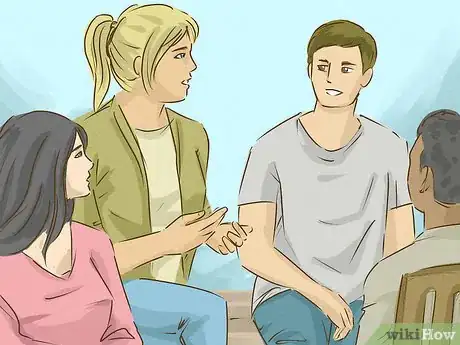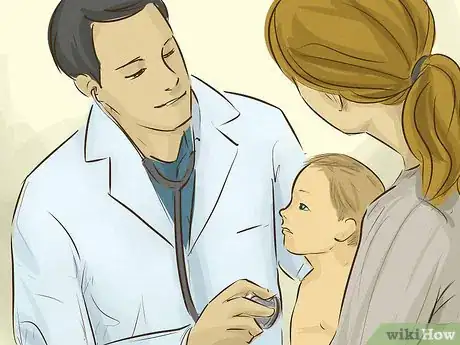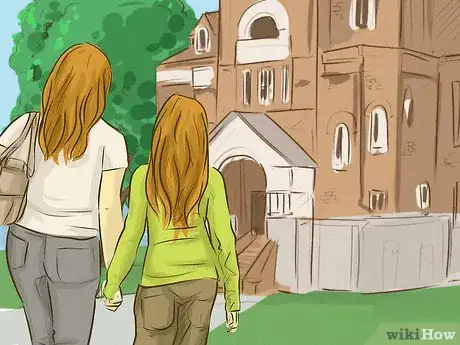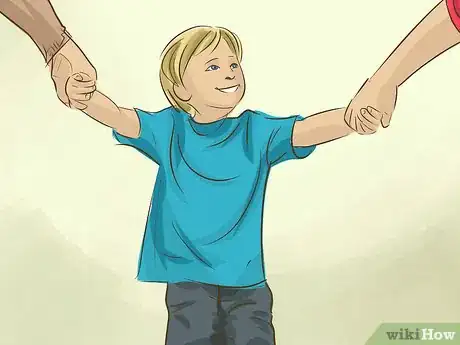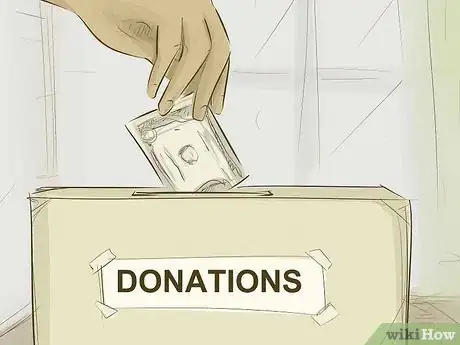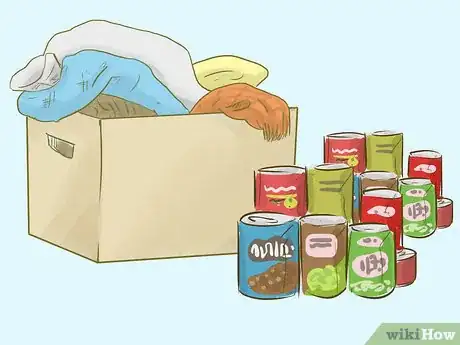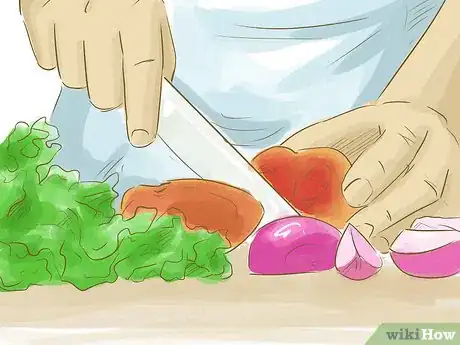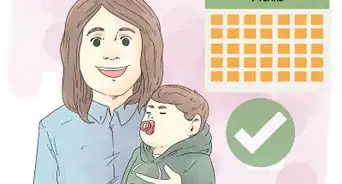This article was co-authored by Asa Don Brown, PhD, DNCCM, FAAETS. Dr. Asa Don Brown is a Clinical Psychologist with over 25 years of experience. He specializes in working with families, children, and couples, treating a variety of psychological disorders, trauma, and abuse. Dr. Brown has specialized in negotiation and profiling. He is also a prolific author having published three books and numerous articles in magazines, journals, and popular publications. Dr. Brown earned a BS in Theology and Religion with a minor in Marketing and an MS in Counseling with a specialization in Marriage and Family from The University of Great Falls. Furthermore, he received a PhD in Psychology with a specialization in Clinical Psychology from Capella University. He is also a candidate for a Masters of Liberal Arts through Harvard University. Dr. Brown is a Fellow of the American Academy of Experts in Traumatic Stress and a Diplomate for the National Center for Crisis Management and continues to serve a number of psychological and scientific boards.
There are 9 references cited in this article, which can be found at the bottom of the page.
This article has been viewed 12,744 times.
You may not hear a lot of news about orphans in the United States, but plenty of children are in need of help. Orphaned children enter the foster care system, most of them going on to live with relatives or foster families. You can volunteer to help children waiting to find a foster family, but you can also help by supporting foster families. No matter what you do, your contribution may improve a child’s life.
Steps
Working with Children
-
1Volunteer at group homes in your area. In the U.S., children awaiting adoption live in group homes, boarding schools, and other facilities instead of orphanages. These facilities are run by the state, so you can volunteer by contacting your local government. Ask about any children’s homes in your area. Your government can put you in contact with these homes and their volunteer coordinators.[1]
- These facilities often need volunteers for roles like cooking, cleaning, and childcare.
- Homes and volunteer organizations have plenty of ways to contribute, so look around to find something that is right for you.
-
2Work with a charitable organization that helps orphans. The easiest way to get involved is often through a church, although charities without religious affiliations are also out there. These organizations offer a variety of roles, from administrative work to working directly with children. Search for the organization online to read about its mission statement and experiences shared by other volunteers.[2]
- Look up a charity’s rating to see if it is legitimate and spends its money correctly. You can use a service like https://www.charitywatch.org/home.
- Talk with administrators and tour their facilities to get more insight on what services each organization provides.
- For example, you might work for organizations like The Orphan Society of America or AdoptUSKids.
Advertisement -
3Become a mentor for an orphaned child. Mentors are like role models for children. You sign up with a mentorship program, which assigns you a child. Like a good brother or sister, you encourage the child to make positive decisions, set goals, and do well in school. You often get to do fun activities together in your community.
- Try volunteering with an organization such as Big Brothers Big Sisters of America.
-
4Become a court-appointed special advocate (CASA). You do not need any special skills to be a CASA. CASA volunteers talk to people in a child’s life, including foster parents and teachers. You relay this information to the court system so that a judge can determine what is best for the child. Courts decide issues such as what the child needs and where they should live. For more information, go to http://www.casaforchildren.org.[3]
- A CASA volunteer is required to pass a background check and a 30-hour training session.
- CASA volunteers have to agree to stay with a child’s case until it is closed, which can take over a year. Make sure this is something you are okay doing.
-
5Offer to take pictures and videos for adoption agencies. All adoption agencies and foster care facilities need footage of children. This footage is shown to potential foster families and adopting parents. You don’t need to have any special training, but being familiar with a camera or video recorder helps.
- A good picture may catch someone’s eye, encouraging them to foster or adopt the child.
-
6Become a respite care provider. Caring for a child can be stressful, especially for foster or adoptive parents who aren’t used to doing it. You can step up to take care of a foster child for up to a few days at a time or in emergency situations. Contact your state government or a foster care facility in your area to begin the certification process. You will need to submit an application to the facility and go through an interview before being accepted as a care provider.[4]
- The facility will put you through at least 30 hours of state training and earn First Aid and CPR certifications.
- Many foster care services pay you a stipend for being a respite care provider.
- Reach out to any foster families you already know. Even babysitting a child in their home can help them.
-
7Foster a child to place them in a home short-term. Fostering is a temporary way to give a child a home. To begin, contact your local public adoption agency. You will usually need to go through an interview and home inspection before you can bring a child home. Public agencies are usually free to use and reimburse you for the cost of fostering a child.[5]
- Depending on where you live, you may need to get 20 to 30 hours of training first. The state handles this and gives you a foster parent license when you are finished.
- Fostering depends on what you want. You can choose to take on children for as little as a few hours at a time for emergency purposes or to help primary caregivers.
- Fostering with the intention of adopting is also an option.
-
8Adopt a child to care for them long-term. When most people think of helping orphans, they think of giving them a permanent home. The adoption process is similar to the fostering process. You will need to go through interviews, inspections, and training before you can adopt a child. Contact an adoption agency to get started.[6]
- Public agencies are free to use, but private agencies often offer guidance. They can help you get your home set up, train you to be a parent, and link you to community resources.
- Children from infants to age 18 can be fostered or adopted, so you can always find a child that is right for you.
Donating Resources
-
1Make a financial donation to an orphan charity. All organizations need money to operate. You can easily make a donation by visiting a charity’s website or by getting in touch with the administrators. Your donation is essential for funding education programs, adoption programs, and many other initiatives.[7]
- Before donating, be sure to research the organization thoroughly. Check to see if the organization was certified as non-profit and that most donations are used to help the children.
- Also read up about the organization, their programs, and any testimonials you can find.
- Get creative when giving. You can give small donations, but you can also work with others, host a fundraiser, or create a scholarship.
-
2Give clothes and other supplies to orphaned children. State facilities and charitable organizations are always in need of supplies, but many foster families can use the donations as well. This can be anything from clothing to toys and school supplies. Ask any organizations in your area about what kind of supplies they need most.[8]
- Work together with other volunteers to gather lots of supplies.
- Don’t underestimate the need for basics like clothing. Many children have limited access to material goods.
-
3Make meals for foster homes and facilities. Cooking can be one of the most time-consuming and expensive parts of helping orphans. Donating food is always an option, whether you purchase food for 1 child or an entire foster family. You can also travel to homes and facilities, then put your culinary skills to work on whatever ingredients they have available.[9]
- If you choose to spend money, monitor your own budget to avoid overspending. Check with the caregivers first to make sure this is okay.
- Canned food is acceptable, but many places are in need of fresh fruit or vegetables.
-
4Help foster families and facilities complete routine chores. It’s no secret that things can get a little hectic when children are around. Busy foster parents, as well as foster facilities, often can use some help keeping up with chores. Your work cleaning, shopping for supplies, or doing other tasks can give parents and other providers time to tackle other responsibilities and has a positive impact on the children.[10]
- Some providers may not have easy access to stores, vehicles, and laundry machines, so offering to handle this helps them.
- Ask foster parents and workers directly about what they need. For example, say, “Can I mow your grass?” Then they don’t have to feel guilty about having you do the work for them.
-
5Educate struggling families on social resources available in your area. Even if you don’t have a lot to offer, you may be able to show foster families where to get resources. Direct them to agencies like food banks or financial assistance offices. Link the families with counselors, social workers, and other services as needed. These resources can encourage people to foster children and stop existing foster families from collapsing.[11]
- You may also offer to transport the families to these places.
Spreading Awareness
-
1Advocate for the rights of orphaned children. You can do this even if you aren’t able to become a foster parent. Read up on the foster care system. Try speaking with agencies, parents, and even foster children. Then, tell others about what you have learned and use the information to advocate for change.[12]
- For example, you might learn that a foster facility needs more funding and supplies. Explain to other people why the facility needs donations. Ask them to share this information with their friends and family as well.
- You will encounter some negative stories, but these are important. Advocates are necessary to prevent more orphaned children from suffering.
-
2Share information on orphans and charities to social media. Spread the word by making use of platforms like Facebook and Twitter. If you have a blog, you can write about orphans there. Remind others that state care facilities exist and that many orphans are waiting there for new homes. Even the act of sharing this information can help spur others to contribute.
- Your family and friends don’t have to become foster parents to help. Even a charitable donation is useful.
- Encourage them to repost stories so that more people can learn about and help orphans.
-
3Discuss volunteer opportunities with others. Tell people about your experience as a volunteer. Explain what you do, such as mentoring, and how that helps children. While you can encourage people to serve as foster parents, also show them all the other needs orphans and charities have. Let them know that there are many ways to give back to children in their area.
- Avoid pressuring people to help out. This usually discourages them from contributing.
- Also be aware that people are suited to different tasks. For example, a busy person might be more comfortable making a donation than being a mentor.
Expert Q&A
-
QuestionIs it good to do volunteer work?
 Asa Don Brown, PhD, DNCCM, FAAETSDr. Asa Don Brown is a Clinical Psychologist with over 25 years of experience. He specializes in working with families, children, and couples, treating a variety of psychological disorders, trauma, and abuse. Dr. Brown has specialized in negotiation and profiling. He is also a prolific author having published three books and numerous articles in magazines, journals, and popular publications. Dr. Brown earned a BS in Theology and Religion with a minor in Marketing and an MS in Counseling with a specialization in Marriage and Family from The University of Great Falls. Furthermore, he received a PhD in Psychology with a specialization in Clinical Psychology from Capella University. He is also a candidate for a Masters of Liberal Arts through Harvard University. Dr. Brown is a Fellow of the American Academy of Experts in Traumatic Stress and a Diplomate for the National Center for Crisis Management and continues to serve a number of psychological and scientific boards.
Asa Don Brown, PhD, DNCCM, FAAETSDr. Asa Don Brown is a Clinical Psychologist with over 25 years of experience. He specializes in working with families, children, and couples, treating a variety of psychological disorders, trauma, and abuse. Dr. Brown has specialized in negotiation and profiling. He is also a prolific author having published three books and numerous articles in magazines, journals, and popular publications. Dr. Brown earned a BS in Theology and Religion with a minor in Marketing and an MS in Counseling with a specialization in Marriage and Family from The University of Great Falls. Furthermore, he received a PhD in Psychology with a specialization in Clinical Psychology from Capella University. He is also a candidate for a Masters of Liberal Arts through Harvard University. Dr. Brown is a Fellow of the American Academy of Experts in Traumatic Stress and a Diplomate for the National Center for Crisis Management and continues to serve a number of psychological and scientific boards.
Clinical Psychologist Oh, for sure! Not only do you do good for others, but you can reap many benefits from volunteering as well. Being a volunteer can enhance your self esteem, self-worth and self-image. Likewise, your willingness to volunteer can also help those that you are serving gain a renewed sense of self and life.
Oh, for sure! Not only do you do good for others, but you can reap many benefits from volunteering as well. Being a volunteer can enhance your self esteem, self-worth and self-image. Likewise, your willingness to volunteer can also help those that you are serving gain a renewed sense of self and life.
Expert Interview
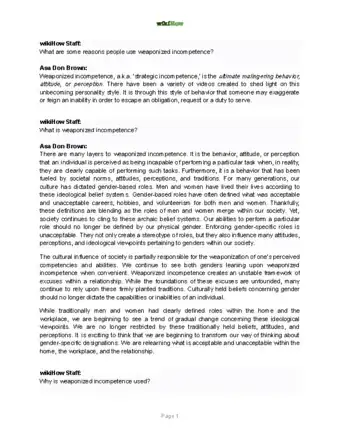
Thanks for reading our article! If you'd like to learn more about helping orphans, check out our in-depth interview with Asa Don Brown, PhD, DNCCM, FAAETS.
References
- ↑ https://www.americanadoptions.com/adoption/do-orphanages-still-exist
- ↑ https://www.childrensaidnyc.org/programs/volunteering
- ↑ http://www.casaforchildren.org/site/c.mtJSJ7MPIsE/b.5301309/k.9D58/Volunteering.htm
- ↑ https://www.adoptuskids.org/adoption-and-foster-care/overview/ways-to-help
- ↑ https://www.adoptuskids.org/adoption-and-foster-care/overview/foster-parenting
- ↑ https://www.adoptuskids.org/adoption-and-foster-care/overview/foster-parenting
- ↑ http://www.theorphansociety.org/how-you-can-help/
- ↑ https://www.adoptuskids.org/adoption-and-foster-care/overview/ways-to-help
- ↑ https://confessionsofanadoptiveparent.com/10-things-you-can-do-to-support-foster-families/
